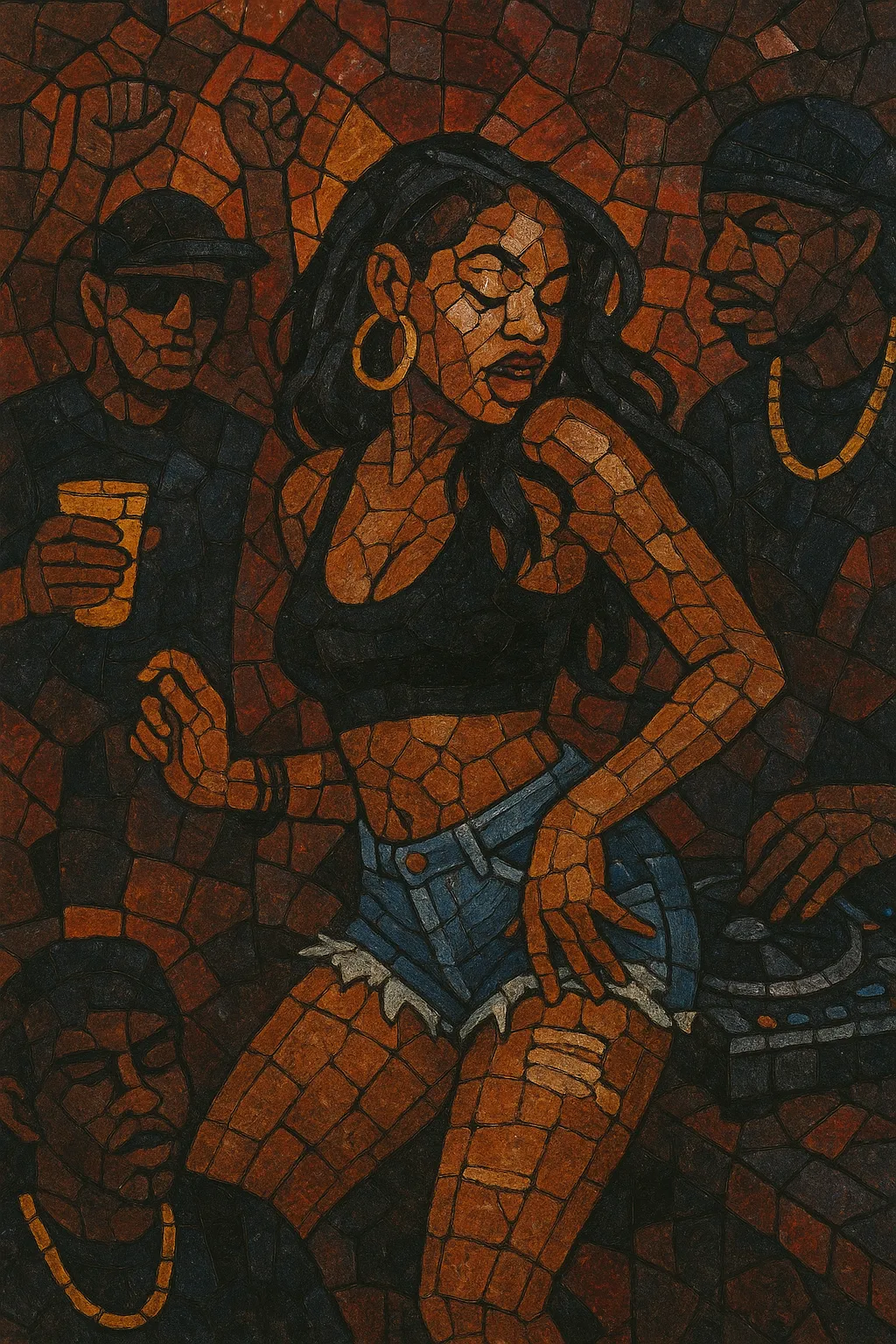Ratchet music is a minimalist, club-focused strain of West Coast hip hop that coalesced in the early 2010s, most closely associated with Los Angeles producer DJ Mustard. It emphasizes sparse drum programming built from 808 kicks, handclaps, crisp hi‑hats, and simple percussive fills; bouncy tempos around 95–105 BPM; short, catchy synth or piano stabs; and a weighty sub‑bass that leaves ample space for vocals.
Culturally and lyrically, it channels “ratchet” party culture and slang—rooted in Louisiana (notably Shreveport’s nickname “Ratchet City”) and amplified by the L.A. party scene—favoring braggadocio, nightlife, flirtation, and chant‑able hooks over dense lyricism. The result is a stripped‑down, hook‑driven sound engineered for dance floors and radio rotation.
The word “ratchet” circulated as slang in Louisiana—especially Shreveport (nicknamed “Ratchet City”) and Baton Rouge—alongside local club anthems and chants. At the same time in Los Angeles, the jerk/jerkin’ wave and a residual hyphy influence produced a taste for uptempo, dance‑ready rap built on simple, chant‑able hooks. Producers and DJs began favoring extremely sparse, clap‑driven drum patterns and short, percussive melodic motifs, laying the groundwork for what would soon be called “ratchet” music in L.A.
DJ Mustard crystallized the aesthetic: 100 BPM grooves, handclap‑heavy snares, booming but uncluttered 808s, and three‑to‑five‑note synth or piano riffs. This palette powered hits like Tyga’s “Rack City,” YG’s “My Nigga,” 2 Chainz’s “I’m Different,” and Kid Ink’s “Show Me,” pushing the style to U.S. radio and clubs. The sound crossed into R&B as well (e.g., Tinashe’s “2 On,” Jeremih’s “Don’t Tell ’Em”), where the same drum skeleton supported smoother toplines without sacrificing dance‑floor impact.
As trap’s hi‑hat volleys and half‑time drops dominated mainstream rap, ratchet production often hybridized with trap elements (808 rolls, darker pads) while keeping its signature swing and negative‑space minimalism. The style influenced pop‑rap and contemporary R&B songwriting, foregrounding call‑and‑response hooks, repetitive earworms, and a clean, radio‑first mix. Even when tempos or textures shift, the ratchet blueprint—sparse drums, sub‑forward low end, and economical melodies—remains a go‑to formula for dance‑oriented hip hop and R&B.


